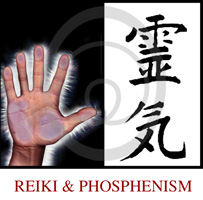SITEMAP THEMES I: SHIATSU & MASSAGE
SHIATSU & MASSAGE

MASSAGE & SHIATSU
Massaging techniques date back to Ancient times; they were used mainly as a therapeutic system, as certified by Hippocrates, in circumstances that are probably quite close to what they are today. Massages and the use of thermal water constitute one of the most universal forms of therapy.
Though oriental methods are quite different from the occidental ones in spirit, their practical applications show that are actually quite similar.
Every period of time has its fashion, its style, but the foundations are the same. Every season, new methods are designed and it is quite common to see practicioners who mix freely various techniques: californian massage, do-in, shiatsu.
Nevertheless, there is no philosophical system that governs the art of massaging in the West.
Shiatsu and do-in refer to the Tao, a metaphysical system based on the dialectic of the yin and the yang, creative principles stemming from a unique principle, that manifests themselves through what acupuncturists call the meridians. The meridians form a kind of network of energy composed of two opposed energies, which imbalance would be the cause of all diseases.
The object of this kind of therapy, through the medium of various methods like plants or physical stimulation of the energy networks (acupuncture needles, pressing with the fingers, etc.) is to re-establish the balance of energy within the individual.
The primal massage
Massage is an instinctive practice among mammals. Human beings are born blind. They discover the world with their sense of touch, then smell, and finally with their sense of audition.
Among mammals, many mothers are unable to recognize their young with their sense of sight: it is their sense of smell that serves as the main bond of recognition.
But, licking also plays an important part in the communication between the mother and her young. Thus, for the young mammal, the feeling of not being abandoned is connected to a form of body massage: a hot and humid contact, rhythmic, and associated to the reassuring smell of the mother.
Massage is thus a way to counter anguish and stress and, at the same time, a way to re-establish a bond of communication between individuals belonging to the same group.
Massages offer two main advantages:
– Providing an outside help: it is the masseur who gives rhythm to the exercise and has the responsability for its performance, thus liberating the mind of the patient.
– Providing an external stimulus that does not require movement: the patient is motionless and can thus concentrate on the sensations produced by the massage.
Phosphenism, a method of personal development designed by Dr Lefebure, helps understanding the mode of operation of most techniques of relaxation and meditation. We will study the massaging techniques in the light of these discoveries.
The phosphenes are all the subjective sensations of light, i.e. those which are not directly produced by light stimulating the retina.
1 – Brush, pressure or squashing
Should a good massage consist in a simple brush on the skin (californian massage) or, on the contrary, should one strongly massage the muscle (sports massage) or even firmly squash the tissues (shiatsu)?
A whole range of pressures of the hand can be found in the various techniques.
We believe the pressure of the hand should be as close as possible as the licking performed by mammal mothers; halfway between the sports massage and the californian massage. The term ‟firm brush” seems to express the idea best. The muscle should feel slightly compressed (something matching the pressure of the tongue and the snout of a Saint Bernard or a sheep…)
Gentle brush can be used during a phase of preparation to warm up the skin and relax the persons who might be apprehensive. Strong pressures can be used at the end of the session if one wishes to achieve a certain intensity, but one needs to be careful.
Strong pressures are likely to have an interesting anti-stress effect, if they are performed well. Nevertheless, this requires a certain tact. It is interesting to note that some oriental masseurs do not hesitate to litteraly ‟step” on their patients, i.e. massage with their feet and their full bodyweight. This seems slightly exagerated though it provides a relevant ‟primal” sensation.
In a simpler fashion, one can try alternating pressures of the palm of the hand, more or less firm, depending on the part of the body treated. In this case, one should not perform a ‟glissé” movement, but rather alternated pressures reminding the movements of the paws of a kitten. This technique belongs to a phase of relaxation and preparation.
In an initatory framework, strong pressures can be used. The contrasting effect will lead to a state of tension that is extremely close to a state of trance, the climax of the session. In opposition to what one might think, relaxation is not the best way to reach a state of ‟illumination”. On the contrary, the violent mobilization of the energy of the muscles is the best way to prepare it.
Let us also precise that it is the variation from relaxation to tension that is efficient. There should thus be an alternation of periods of tension and relaxation. Simply note that relaxation is a means rather than an end.
Conclusion: the main part of the massage session should be constituted of average pressures, brushes being only used in the phase of preparation. Squashing should be used only during a final phase and only for an initiatory purpose.
2 – Fast or slow rhythm
According to the works of Dr Lefebure, the rhythm of massage should, on average, be of one alternation left hand/right hand per second. The rhythm should match the rhythm of licking of dogs or cats.
One should simply let themselves be carried by their intuition, a feat that is not so difficult to perform as massaging is such a natural need.
Nevertheless, there is a main point to respect, even more important than the precision of the rhythm: never interrupting the rhythm.
More precisely, the contact between the masseur and their patient should not be interrupted. This point is raised by certain books and is certainly instinctively practiced by many masseurs, but it is not necessarily obvious to everyone.
Without a doubt, if the masseur interrupts the contact of their hands with the body of their patient, for example to coat their hands with oil or to increase the heating, or simply to pass from the left leg to the right leg, this produces an unpleasant feeling for the patient.
This sensation can be explained by the fact that abandoning one’s mother (interrupting physical contact) creates anguish.
Consequently, the masseur should strive to maintain ‟contact” during the whole session. A session of massage is a sort of journey performed together, from A to B. If the bridge between the masseur and their patient is severed, it will be difficult to reach the goal of this journey.
3 – Mode of operation
Do a phosphene with the phosphenic lamp, then project your phosphene on the part of the body that you are going to massage. This process will deepen the effects of the massage.
Then,
First phase: – The patient lays on their belly: back, right leg, left leg. Left part of the back, right part of the back.
Second phase: – The patient lays on their back: right leg, left leg, right part of the chest, left part of the chest.
Then move behind the head of the patient, massage both sides at the same time, with a very light movement, from the shoulders to the chin (5 to 10 times), then from the chin to the top of the head. Brush a single time the eyelids with your index fingers.
This is a basic way to proceed, it should be progressively combined with a phase of preparation then, after a certain period of training, with a final phase meant to work with ‟initiatory” perceptions.
Importante Note
We have done our best to provide you with the most accurate translation of our french website. Nevertheless, it is possible that some language errors may remain. So, don’t hesitate to contact us to communicate them to us.
Thank you for your indulgence and for your consideration of the many hours spent translating all our pages and, more particularly, all the testimonies we share with you so that you may become aware of the impact that Phosphenism can have on those who practice it.
Wishing you the best with your practice of Phosphenism.
Daniel Stiennon (Dr. LEFEBURE School Director, France)








